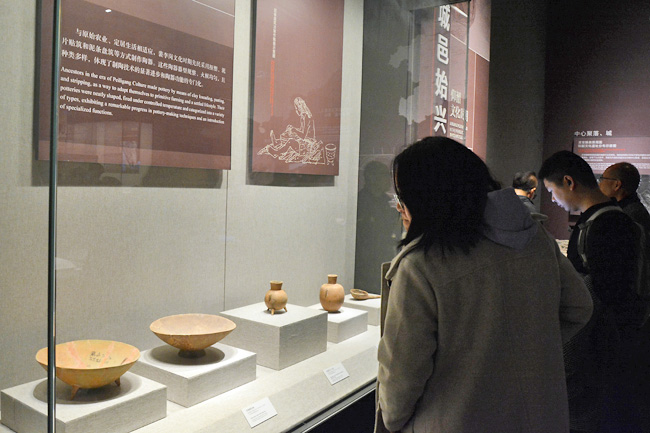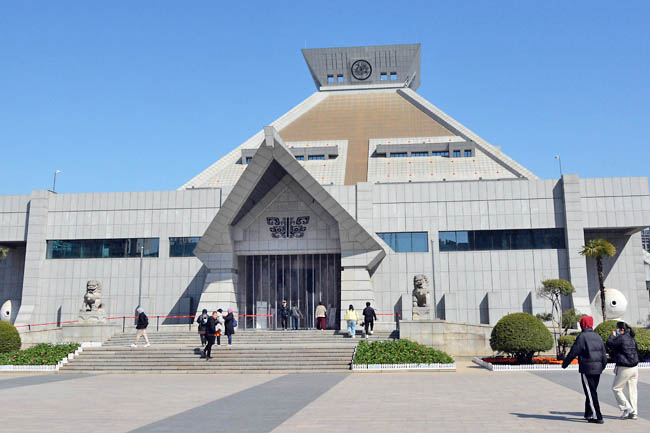The Henan Museum offers a fascinating glimpse into China’s rich and complex history, showcasing artefacts that span thousands of years. As one of the oldest museums in the country, it houses a remarkable collection of over 130,000 cultural relics, each telling a story of China’s vibrant past.
During a recent visit to China, Brunei Darussalam’s media representatives had the opportunity to explore this prestigious institution, located on Nongye Road in Jinshui District, Zhengzhou, the capital of Henan province.
Established in 1927, the Henan Museum holds the distinction of being one of China’s earliest museums. Over the decades, it has evolved into a premier cultural and historical centre. The museum’s modern iteration was officially inaugurated on May 1, 1998, boasting state-of-the-art facilities reflecting its status as a national-level institution.
The Henan Museum offers visitors an immersive experience into the ancient civilisations that shaped the region. From exquisite bronze ware to delicate ceramics, from intricate jade carvings to historical calligraphy, the museum presents an unparalleled glimpse into the artistry and craftsmanship of bygone eras.
EXPLORING THE CENTRAL PLAIN’S LEGACY
On the ground floor, spanning rooms one to 10, visitors can embark on a journey through the rise of civilisation in the Central Plain. Bordered by the Taihang Mountains to the north, the Han and Huai Rivers to the south, the Funiu Mountains to the west, and the Shandong terrain to the east, this fertile land – nurtured by the Yellow River – has been a cradle of Chinese civilisation for millennia.
The legendary Emperor Yu the Great, known for his contributions to flood control, divided into nine regions, one of which was the Central Plain, or the Region of Yu.
It was here that generations of ancestors thrived, forming the foundation of Chinese identity.
The descendants of the Yan and Yellow Emperors flourished in this land, which became the heart of the Chinese nation’s development. Over thousands of years, more than 20 dynasties chose the Central Plain as their capital, solidifying its significance in Chinese history.
One of the most captivating sections of the museum is its collection of bronze artefacts from the Chu State.



THE BRONZE ART AND RITUAL VESSELS OF THE CHU STATE
Unearthed from tombs dating back to the Spring and Autumn Period, these remarkable pieces are a testament to the artistic ingenuity and metallurgical advancements of the era. Adorned with intricate patterns and symbolic motifs, the bronzes showcase the refined craftsmanship and cultural depth of the Chu civilisation, preserving a legacy that has endured for centuries.
Among these treasures are ritual vessels that played a pivotal role in ancient ceremonies.
Food containers, widely used during banquets and sacrificial rites, reflect the elaborate customs of early Chinese society.
Additionally, bronze water vessels, employed for ritual purification, highlight the significance of cleanliness and spiritual preparation in traditional ceremonies.
THE DYNASTIES OF HENAN: A CENTRE OF POWER AND PROSPERITY
Ascending to the second floor, visitors will find relics from the Qin, Han, Wei, Jin, and the Northern and Southern Dynasties, as well as the Sui and Tang Dynasties.
These artefacts reveal the evolution of governance, culture, and daily life over centuries, providing insight into Henan’s enduring significance as a political and economic hub. The third floor is dedicated to the Ming and Qing dynasties, highlighting Henan’s strategic role as the southern gateway to the imperial capital.
At the dawn of the Ming dynasty, emperors dispatched princes to settle in Henan, reinforcing the presence of the imperial court and securing the empire’s borders.
During the Qing dynasty, Henan was incorporated into Zhili Province, a key administrative region under direct imperial rule, governing present-day Hebei, Henan, and Shandong provinces.
The Ming and Qing periods saw remarkable advancements in agriculture, handicrafts, and commerce. Trade flourished, cities expanded, and prosperity reached new heights.
The museum’s exhibits showcase the opulent artefacts of this era, from finely crafted ceramics and textiles to intricate jade and lacquerware, illustrating the wealth and refinement of Ming and Qing society.
Through its extensive collections and carefully curated exhibitions, the Henan Museum provides a deeper understanding of the region’s historical significance.
Each artefact, whether a bronze vessel, an ancient script, or a finely crafted piece of jade, offers a window into the past, allowing visitors to appreciate the traditions, artistry, and ingenuity that shaped Chinese civilisation. – James Kon


